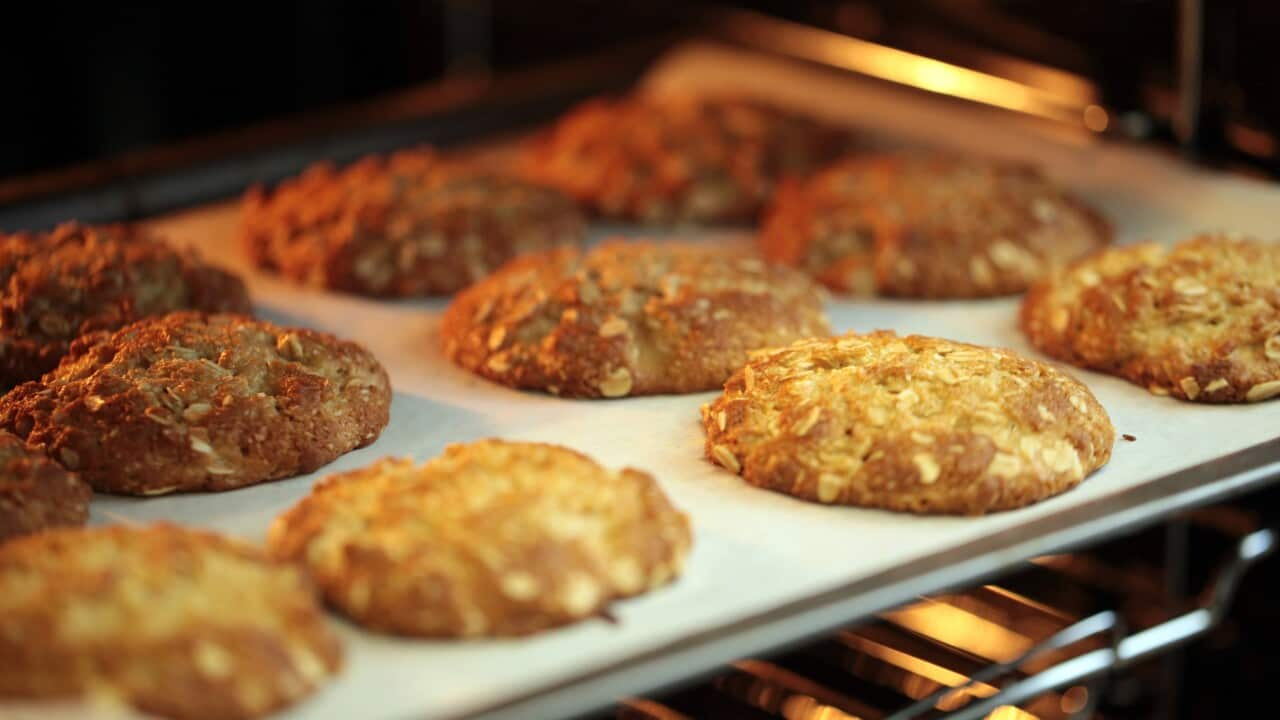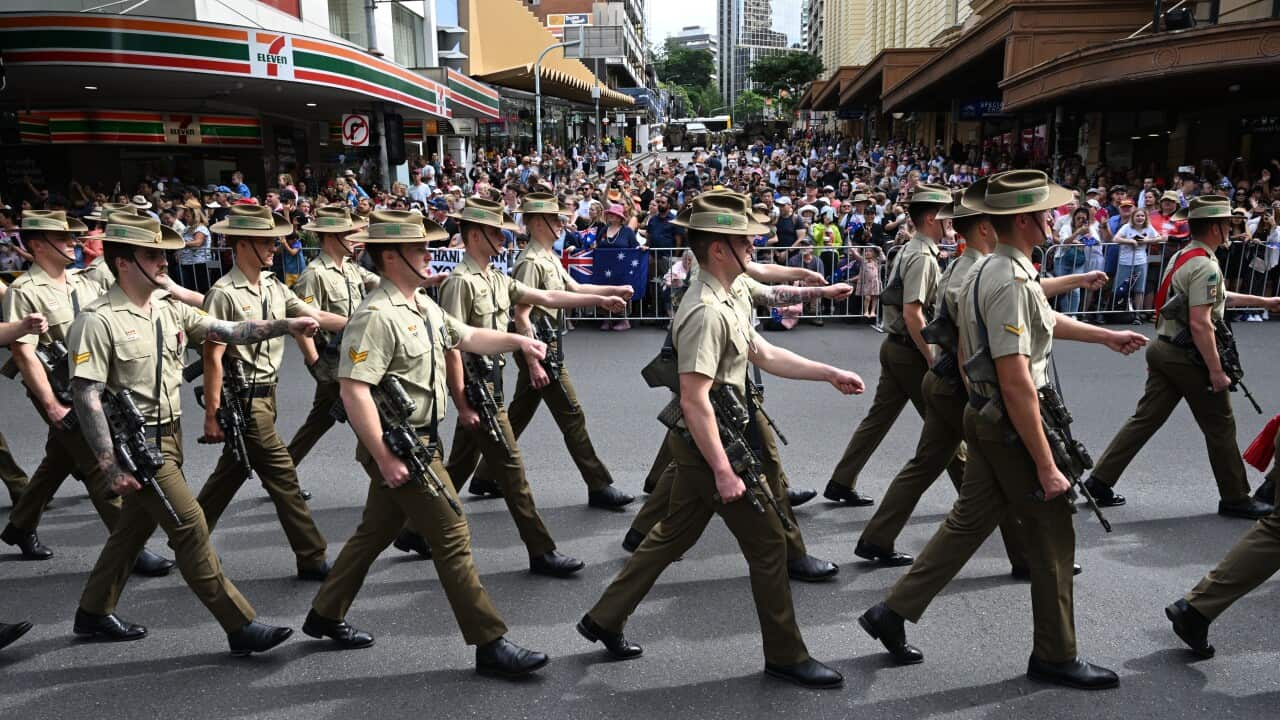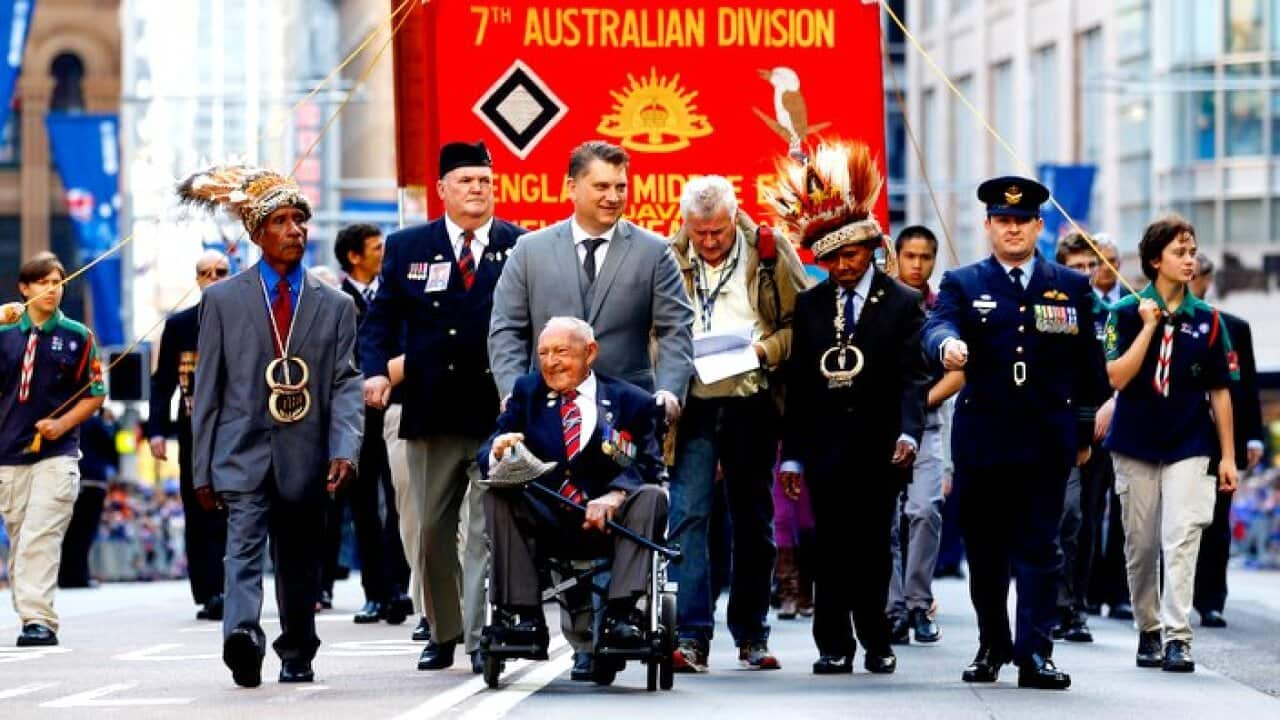They've been a delicious mainstay of Anzac Day commemorations for over 100 years.
In order to use the word "Anzac" in reference to your baked goods, the Department of Veterans Affairs (DVA) says they can't "substantially deviate from the generally accepted recipe and shape".
That means the addition of non-traditional ingredients like chocolate or fruit, or crafting them in a novelty shape is out.
They must also be called "Anzac biscuits" or "Anzac slice" — never "Anzac cookies".
If you're found to breach the regulations, you could face up to 12 months in prison or a fine.
The DVA says it declines applications for permits every year that want use the word "Anzac" in the names of products that don't conform to the rules.
Past examples have included "Anzac muffin", "Anzac cheesecake" and "Anzac sandwich".
What are the exceptions to the rule?
The regulations only apply to the commercial production and sale of Anzac biscuits, meaning if you bake them at home using an unconventional recipe and give them to your loved ones, it isn't counted as a violation.
Tweaking ingredients to meet dietary requirements, such as making them gluten-free or vegan, isn't considered a deviation either.
Anzac biscuit recipes posted on personal social media accounts, or that are included in cookbooks with other recipes, also fall out of the scope of the regulations.
What's the history of the Anzac biscuit?
Culinary historian Allison Reynolds is an authority on Anzac biscuits, having written a book that explores the origins and meaning behind the beloved oat-filled treat.
It likely evolved from pantry staple recipes like oatcakes, British flapjacks, gingerbread and Scottish parlies, she said.
An early iteration was included in the Australian War Chest Cookery Book in 1917, while the ingredients and method used today were published in a New Zealand cookbook in 1919.
It's likely the recipe was developed in both countries at the same time, when cooks used golden syrup as a binding agent amid an egg shortage sparked by farmers going to war.
The resulting recipe also meant the biscuits stayed fresh in care package tins.
There was debate among historians about whether soldiers receiving packages of treats was a romantic myth, but letters like those from Private Teesdale Smith make reference to sweet homemade biscuits.
A 1918 advertisement in a regional Victorian newspaper also appeals for empty treacle and golden syrup tins in which to send biscuits — "the sweets our boys long for".

An early iteration of the Anzac biscuit was included in the Australian War Chest Cookery Book in 1917 Credit: National Library of Australia
Anzac biscuit recipe
Those wanting a DVA-approved Anzac biscuit recipe can use the one below.
Ingredients:
- 2 tablespoons of butter or margarine
- 2 tablespoons golden syrup
- 1 teaspoon of bicarbonate of soda dissolved in 2 tablespoons boiling water
- 1 cup of rolled oats
- 1 cup of desiccated coconut
- 3/4 cup of brown sugar
- 3/4 cup of plain flour
Method:
- Heat oven to 160C.
- Melt butter (or margarine) and syrup.
- Add dissolved bicarbonate of soda and water.
- Mix dry ingredients in a bowl, add the liquid mixture and stir.
- Place small balls of the mixture (about 1 teaspoon) onto a greased tray.
- Bake for 20 minutes or until lightly brown.
- Lift biscuits onto a cake cooling rack and wait for them to cool.
Additional reporting by Australian Associated Press











